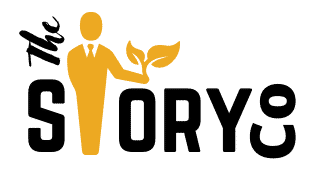Human Resources as a profession relies heavily on communication and with phenomena like Quiet Quitting taking the center stage, this reliance has increased multifold. We take a look at how adding storytelling fundamentals can help HR professionals break communication barriers.
Adding another Gen Z terminology to the workspace, “Quiet Quitting” these days, is quite a buzz. According to a viral TikTok video, Quiet Quitting essentially means, “You’re still performing your duties but you’re no longer subscribing to the hustle culture mentality that work has to be your life.”
According to a survey by Microsoft, 41% of workers globally are thinking about handing in their notice. This includes a majority of Gen Z and millennial workers. The dissatisfaction is caused due to burnout. With the advent of the passion economy – which includes people doing more of what they truly love, side hustles have taken the lead. Netizens have argued that Quiet Quitting occurs due to two major causes – employees decide to do only the things they are paid to do or they use it as a means of self-preservation. It is being adopted by employees who do not feel appreciated or paid enough for the extra labor they put into their work. This trend is a counterculture to the hustle mentality.
But why are we talking about Quiet Quitting?
This phenomenon highlights a larger challenge that employees and organizations have been facing – the lack of open communication. In spite of frequent rounds of conversations, anonymous surveys, and feedback forms – the real challenges faced by both the management and the employees can remain unacknowledged. Quiet Quitting shines the spotlight on the importance of transparent communication once again.
Storytelling can play an important role here. Stories when applied to any form of communication – make the conversation more candid, relatable, and comfortable. Storytelling can help the management and especially the HR to truly become a partner of the employee and help them open up. The role of HR has evolved dramatically in the last few years and especially since the pandemic. Transparent communication and seamless trust can help both parties create a rapport based on mutual respect.
Below are a few ways in which HR professionals can add storytelling to their communication and even policies.
Add the employees’ stories to the company’s narrative
Involving the employees in the narrative of your company can be done through employer branding initiatives. As a company owner, you must pay attention to this because your employees are the faces, the outside world sees. The strength of your employer branding initiatives will determine how employees answer, “What is it like to work at XYZ company?”
In 2022, employees are not simply working for a monthly salary. They are working to thrive in environments where their souls are being fed and enriched. This makes them important stakeholders who could be called ‘Partners.’ For instance, Starbucks has a practice of addressing its staff on social media as ‘Partners’ as they talk about their career trajectory and experience at the organization in the form of a story narrated by the partners themselves.
Give the employees a platform
The experience every employee has at your organisation is a story in itself. Some stories might be good, while some might not. In either case, the employees need to be given a platform and an opportunity to share their stories.
Netflix’s We Are Netflix is an interesting example of giving employees the right platform. We Are Netflix is essentially a website that features the stories of Netflix employees as they go through day-to-day life. They also have a podcast of the same name, available on the website. These properties feature various employee stories such as the support a person got from her employer as they navigated the adoption process and stories from ‘Black employees in Brazil.’
As an organization or an HR, you do not have to create something as big as We Are Netflix, but a company blog or social media handle where employees can record and share their stories could work wonders. This could also be done through workshops and activities within the office, where employees take turns narrating their experiences.
Welcome stories of taboo
Workplace absenteeism is caused due to stress, anxiety, and a hint of depression which affect the performance and productivity of the employees. Organizations need to offer flexibility and encourage breaks to help solve this challenge. But is that all?
Organizations could lead by example by being more vocal on the lesser spoken-about topics. Trust me, there are many! From mental health to imposter syndrome to menstruation – many of these things play an active role in professional life but are rarely spoken about. A story of how period leaves helped an employee make sense or how a company-organized therapy session came to the rescue, could act as an inspiration for many others to come forward with their problems as well.
Sharing stories with each other would drive empathy and compassion. While organizations have started sponsoring therapy sessions for employees, having self-help groups within the work atmosphere can bring vulnerability and closeness with amongst the employees and assertiveness towards the organization as a whole.
Practice story listening
To be a good storyteller, you need to realize the importance of empathizing with your audience. But how does one feel, what their audience is feeling? By listening. Listening will help you derive insights into what you’re employees are truly going through.
Before putting your point across, it is essential to listen to the dilemmas and hardships faced by the employees. When you don’t pay attention to their story, you could completely misunderstand and present a solution for the wrong problem. As a leader, if you wish to foster listening as a habit within yourself, you can use the technique of a Talking Stick. Every time you wish to talk, you ask your employees to pass the stick and this goes vice versa. The usage of this stick can give equal opportunity to employees to talk and feel heard at the same time. Opening communication doors can help clear out confusion, hesitation, and disengagement. Also, always give the employees an option to share their stories anonymously.
Keep your eyes on the facial expressions
While they narrate their story, notice their expressions and gestures – where did they smile or frown. Facial expressions allow people to express themselves without language barriers and help listeners interpret their stories effectively.
Don’t be afraid to show your own emotions periodically. No, I do not mean that bawl your eyes out at a sad moment or let out bellowing laughter – but respond to their story with subtle emotional cues and phrases. Be it saying I understand when someone is sharing their problem or chuckling at a joke they might have cracked.
Do away with boring sessions
Of course, this does not include technical training, but the larger gatherings like town halls and icebreaker activities, which can turn into formal chit-chat. Instead, focus on creating a more candid atmosphere, and call the gathering a better name. Even in training sessions, stories can be an important part – for instance how did this coding course help someone in their career?
Don’t discount data
Be it from surveys and anonymous feedback forms or one on one interactions – as an HR professional you have access to a lot of data. What are the common triggers mentioned by employees? Which activity or celebration was a hit? Which manager received the most complaints? Create your communication and plan of action basis these insights. This data can help you decide the direction in which you would like to take your story.
Quiet Quitting as a culture has many layers – many reasons, many pitfalls, many drawbacks, and even many benefits. While you decide whether and how it needs to be dealt with, these common storytelling practices added to your HR communication might enable employees to come out and share genuine challenges and help you address them with an open mind.
If you liked what you read, check out our blog for more amazing content from the world of storytelling.



